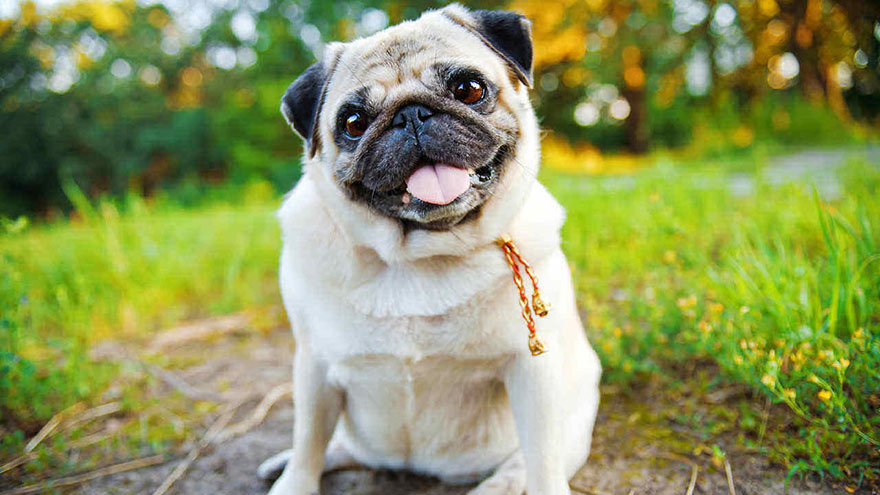Pug Health Guide
There are always some minor health issues with any family pet. But if the new owner works with a reputable breeder and consults regularly with the veterinarian, purebred dogs such as the Pug can live long, healthy lives.
It is important to begin by purchasing your puppy from a top breeder who has carefully selected healthy breeding parents and given the young dogs excellent nutrition and plenty of exercise.
Health Problems in the Pug
But even the most careful of breeders and the most watchful owner cannot prevent all health problems in a purebred dog. The Pug is prone to a few particular health conditions that owners should be aware of. The first and foremost is obesity.
The Pug will overeat if the opportunity is there, so the new owner would be wise to provide smaller portions of food at regular times during the day. In addition, the Pug is a small, stocky dog that does not need a lot of vigorous exercise, but this should not prevent you from taking your pet for regular walks and giving the dog a chance to play in the yard or the park.
Pug owners should also be aware of potential for damage to the surface of the prominent eyes of the breed. Corneal scratches can be a serious problem for this dog. In addition, the short snout does not provide much protection for the eyes. This short snout can also be at the root of breathing problems, especially in extremely cold or extremely hot weather. Owners should always be conscious of this.
Pugs can suffer from a form of brain inflammation that is specific to this breed. The common name is Pug Dog Encephalitis (PDE). Most sources of information on this disease state that there is no known cure for PDE.

The scientific name for the condition is granulomatous meningoencephalitis. It is believed to be inherited, so this may be one of the topics you should discuss with the breeder as you look at puppies. Any information you can gather on this condition will be helpful later on.
Pugs may also be prone to a condition called hemivertebrae. The condition known as screwtail is just one obvious sign of this. But when hemivertebrae occurs in the internal spine, paralysis can result. This condition occurs when the two parts of the vertebrae do not fuse properly during development. The two halves grown unequally and the resulting shape may put pressure on the spine.
RELATED :: How to Care for Your Pug
Often the dog must be put to sleep, since there is no other avenue for relief. The defect is present at birth and is most common in short muzzled dogs such as the Pug. X-ray evaluation on the very young puppy can show this condition. It would be a good idea to consult with your veterinarian and the breeder about hemivertebrae.
There are a few other health issues new owners should be aware of with Pugs. These include taking care of the facial wrinkles on the unique face of the breed. Dirt, carpet fuzz and other “stuff” can get into the wrinkles and this needs to be cleaned out. The idea is to avoid letting infections or irritations start in this area.
Another area that new owners may not always be prepared for is trimming the nails of the Pug. The claws/nails tend to grow quite rapidly with this breed. However, the nails should not be cut too closely because this can cause damage and pain. If you are unsure, have someone with experience take care of the trimming while teaching you how to do it.
Some breed experts will also caution new owners to be aware of the need for Cesarean Section when Pug litters are born. This breed is not one that has a particularly easy time with the birth of puppies.
If you are thinking about breeding your Pug later on, you may want to talk at length with other breeders or with veterinarians to make sure you are prepared for any special situations that may arise.
Read More About Pug
- Pug Breed Information
- Pug : 10 Most Common Questions
- Pug Training Guide
- Owning a Pug : Breeder Recommendations

